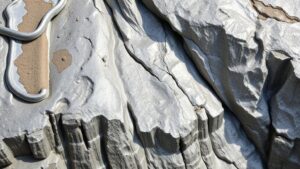The Role of Subtle Color Changes in Soil for Detecting Silver Deposits
The Role of Subtle Color Changes in Soil for Detecting Silver Deposits
Soil characteristics can hold vital clues in detecting mineral deposits, including precious metals like silver. One of the more intriguing aspects of soil analysis is the subtle color changes that can indicate the presence of minerals in the subsurface. This article explores how soil color variations can serve as effective indicators of silver deposits, the scientific principles behind these changes, and practical applications in mineral exploration.
Understanding Soil Color and Its Importance
Soil color is influenced by various factors, including organic matter, moisture content, and soil mineralogy. Munsell Soil Color System is commonly used to categorize soil colors systematically, which helps in assessing soil properties crucial for geochemical analysis. Changes in soil hue, value, and chroma can provide insight into the chemical processes occurring below the surface, potentially revealing the presence of ore deposits.
The Science Behind Soil Color Changes
Subtle color changes in the soil often result from oxidation-reduction processes, pH changes, or mineral interactions. For example:
- Oxidation of Iron: When iron minerals in the soil oxidize, they can impart a reddish hue, which might indicate higher concentrations of certain minerals, including silver.
- pH Variations: Soil pH can influence the solubility of metals. Acidic soils may leach out certain metals and alter colors in the presence of silver sulfides.
These factors, among others, contribute to the visual cues that can suggest the potential for silver deposits. For example, soils that appear darker or exhibit bluish-gray tones may suggest reduced conditions favorable for silver mineralization.
Case Studies and Practical Applications
Numerous case studies underscore the effectiveness of color analysis in mineral exploration. For example, in the Sierra Nevada region of California, geologists observed that areas with silver mineralization exhibited distinct color patterns in the soil compared to surrounding areas.
Also, an exploration project in Mexico utilized soil color analysis alongside geochemical assays to pinpoint areas rich in silver. project identified soil exhibiting a yellowish tint, which correlated with high concentrations of silver-bearing minerals. The integration of soil color and chemical data streamlined the exploration process, leading to successful drilling operations.
Integrating Soil Color Analysis with Other Techniques
While soil color can serve as an initial indicator of silver deposits, integrating it with other geochemical and geophysical techniques can enhance accuracy. Common complementary methods include:
- Geochemical Sampling: Soil samples can be analyzed for the presence of silver and other elements using techniques such as atomic absorption spectroscopy.
- Geophysical Surveys: Using electromagnetic or resistivity surveys can help target areas where color changes suggest mineralization.
Combining these methods allows for a more comprehensive understanding of potential mineral deposits, reducing the risk of overlooking viable targets during exploration.
Addressing Concerns and Limitations
While soil color analysis is a useful preliminary tool in detecting silver deposits, it comes with limitations. Factors such as vegetation cover, soil type, and anthropogenic influences can obscure color changes. Also, without accompanying geochemical analysis, color alone may not conclusively indicate the presence of silver.
So, it is critical for geologists to consider environmental variables and utilize a multidisciplinary approach in exploration efforts. This thorough methodology includes validation through drilling and further testing, increasing the odds of successful mineral discovery.
Actionable Takeaways
- Geologists should incorporate soil color analysis into their exploration toolkit, utilizing standardized color systems for consistency.
- Combining color analysis with geochemical and geophysical methods will provide a more robust understanding of silver deposit potential.
- Continued education on the underlying principles of soil chemistry can enhance the accuracy of field assessments and mineral explorations.
In summary, subtle color changes in soil can provide indispensable insights into the detection of silver deposits. By understanding the science behind these variations and integrating them with other exploration techniques, geologists can improve their chances of successfully identifying economically viable mineral deposits.



